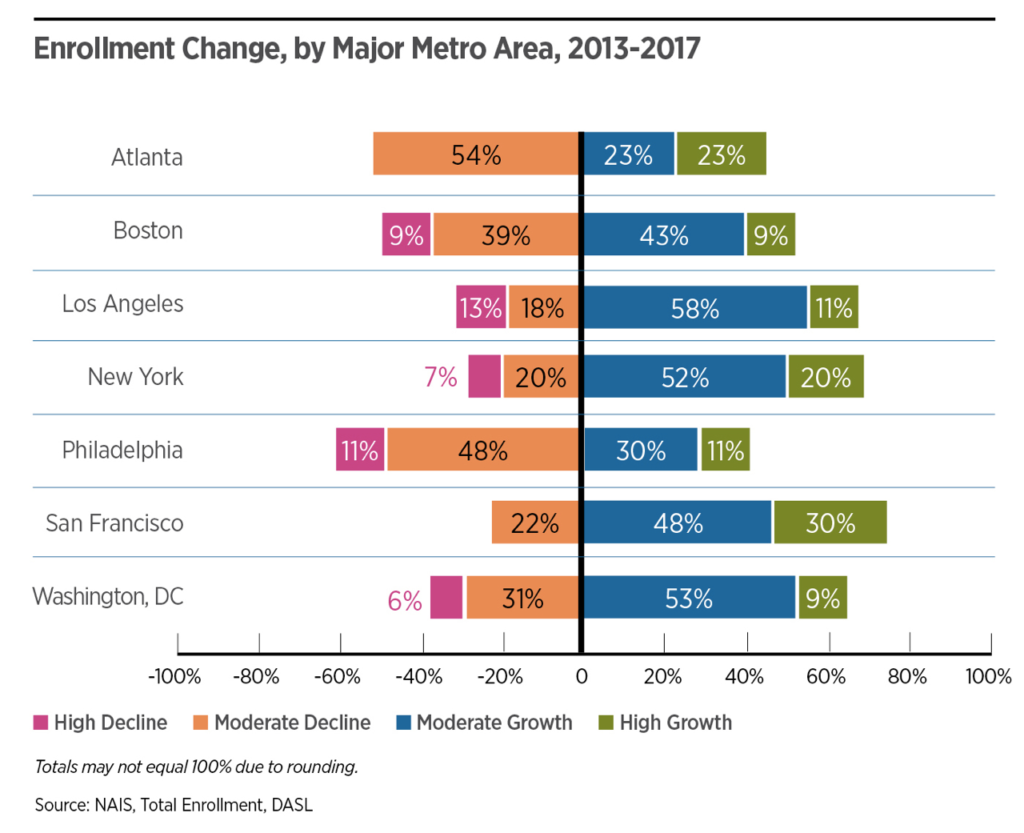Phoebe Barr ’19

In response to questions about EA’s changing student body size and the admissions decisions behind it, Peter Anderson, Director of Admission and Enrollment Management, gave Scholium new perspectives on the admissions data for recent years.
“For each grade, pre-k and up, we have patterns for yield,” Anderson explains, referring to the number of students, out of those accepted, who choose to come to Episcopal each year. “We take a long historic pattern, and we make a determination about how many students to accept.” He discusses the year 2015, in which the yield was unusually high: “I talked to eight or ten different admissions directors at a variety of schools, showed them how I was arriving at yield to be sure, and then arrived at 50% or 51% as the anticipated yield. But yield that year was closer to 54%. What coincided with that was attrition (number of currently enrolled students who leave the school in a given year). Our attrition dropped by almost a half.” This sort of anomaly, says Anderson, is a natural part of uncertainty in the process. “This happens in every college and university and school – both were on one side, both happened with us guessing at a time when we didn’t have any information.”
Episcopal does use a wait pool, but some wonder why we do not use it to a greater extent. “Some people think it’s good to have people in the wait pool, because it sends the message to the community that you’re especially selective,” Anderson says. “Everyone wants to go to Harvard because it’s Harvard. But it’s not the same dynamic when it comes to high school and middle school. These are kids who are getting bad news. When you do that, you lose those families in greater numbers. And you tend to have a drop in the ability to get the best possible students.”
This is the explanation for the unusually high enrollment in the current senior class; however, there are other, less random reasons for increasing class sizes overall. Chief among these are financial concerns; Anderson says that a great driver of expense is the need for top-level employees. “And that’s appropriate. We need to have the best possible faculty, and I think we need to be competitive. Another piece of that is health care costs, which have skyrocketed in recent years but have always been going up. When that happens in sometimes double-digit levels, it impacts a school especially.”
Can tuition continue to rise to meet these rising costs? Anderson says that even among families who could continue to pay, “they would be less inclined to pay. And not just now – if you keep doing it, year after year, you end up in a bad place. In 1970, when schools in this area probably cost about 3,000 dollars, if they had a 10% increase in tuition fundamentally it wouldn’t affect demand. The problem is, tuitions rarely go down. When you establish one year that you have a 5 or 6 percent tuition raise, you’re going to keep going up the next year. Some other area schools, for example, are now charging as much as 40,000 dollars a year.
We’re charging around 35,000. By having this balancing act between having a few more students when we’ve needed to and raising the band a little bit at a certain period of time, we’ve been able to moderate our tuition hikes in a manner that now puts us at a very competitive advantage, because as tuition goes up, and the fraction of families that view your school as affordable goes down, it risks your ability to be selective.”
This is not only an issue for the school. While optimizing demand is a good thing, Episcopal also strives to be a school which area families can reasonably afford. “That is our mission as a school,” Anderson asserts. “And we’re going through a process of really focusing on that in our campaigns for fundraising. We spend an awful lot on financial aid, and that becomes a bigger and bigger part of how we determine our budget.”
High-quality independent schools in the area are all struggling with these things; it isn’t unique to EA. According to the graph, 34% of Philadelphia independent schools have experienced “moderate growth” in the past several years, which lines up with our school’s growth; 11% have even experienced “high growth.” However, says Anderson, “from 2008 to 2009 there were a little over 12000 enrolled in well-known strong independent Philadelphia area schools; from 2018 to 2019 it was a little over 11500.” This points to the fact that some schools are shrinking while others, like Episcopal, are growing. Episcopal’s path, Anderson explains, is in line with “best practices, not just at EA but at all schools.”